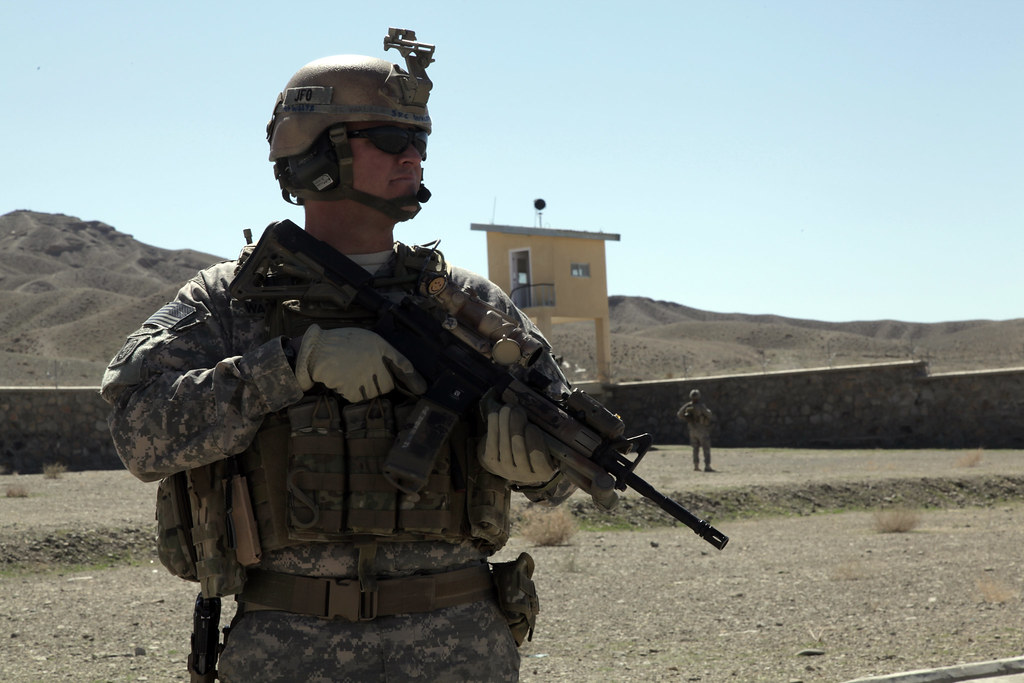By Savannah Wix.
Drug and human trafficking across the Mexican border have long been major concerns for Arizonans. For instance, in December 2021, Scottsdale Police and the DEA seized $9 million worth of fentanyl pills and ten kilograms of powdered fentanyl, the trafficking of which was attributed to the notorious Mexican Sinaloa cartel. Although other illegal drugs enter Arizona’s border, counterfeit pills containing lethal doses of fentanyl in particular pose major concerns for citizens’ welfare, especially since the beginning of the COVID-19 pandemic, as overdose rates skyrocket. Cartels and gangs also profit greatly from human smuggling into Arizona, reportedly earning more than $14 million each day in February 2021. The Attorney General’s office claims that such drug and human trafficking propogate violence along the border.
As a result, and in response to Representative Jake Hoffman’s legal opinion request, on February 7, 2022 Arizona Attorney General Mark Brnovich released a legal opinion asserting that Arizona is under invasion along its southern border and that Governor Doug Ducey is empowered by the U.S. Constitution to defend Arizona against this invasion by use of force. But this opinion’s conclusion adopts too broad a view of invasion as defined within the Constitution and provides too drastic of a solution.
Constitutional Authority
Article I, Section 10, Clause 3 of the U.S. Constitution (“State Self-Defense Clause”) provides that “[n]o State shall . . . engage in War, unless actually invaded, or in such imminent Danger as will not admit of delay.” In an instance of invasion, the State does not need the consent of Congress to defend itself. Article IV, Section 4 of the U.S. Constitution (“Invasion Clause”) further provides “[t]he United States … shall protect each [state in this union] against invasion.” Together, these clauses provide dual protection for states from foreign invasions.
The question is what constitutes an “invasion” such that the Arizona National Guard would have the legal authority to engage in use of force under the command of the governor? In his opinion, Brnovich cites Federalist Paper 43, stating that an invasion involves defending against actions by “foreign hostility [and] ambitious or vindictive enterprises of [a state’s] more powerful neighbors.” The Attorney General asserts that the smuggling at the Arizona-Mexico border by cartels and gangs fits within this definition, comparing it to James Madison’s example of a state militia acting to suppress smugglers and calling this the “paradigmatic example of a justified and Constitutional use of the state militia.”
What’s Happening at the Border?
Brnovich claims in his opinion that drug and human trafficking are sources of violence sufficient to constitute an invasion within the meaning of Article I, Section 10 of the U.S. Constitution. But in his discussion of the violence at the border, Brnovich cites few instances of violence, hardly enough to justify initiating war within the meaning of the State Self-Defense Clause. These instances include, to name a few, a June 2019 shootout between cartel members near a point of entry in Mexico, a 2017 assault of a National Park Service employee by an unauthorized entrant, and, most recently, a shooting attack on Texan border patrol agents from across the border.
The majority of his discussion of “violence” instead centers on statistics regarding the influx of illegal drugs from Mexican cartels. There is no doubt that illicit drugs, such as fentanyl, pose serious problems for Arizonans. In October 2021, the Congressional Research Service reported that “Mexico’s cartels control the movement of most foreign illicit drugs trafficked into the United States, including heroin, fentanyl, cocaine, methamphetamine, and marijuana.” Additionally, the human trafficking is not limited to voluntary illegal immigration; sex trafficking is also reportedly prevalent along the Arizona-Mexico border.
Although drug and human trafficking are inextricably tied to violence, these cited instances are insufficient to constitute an “invasion” justifying “right to use force.” Brnovich adopts a broad view of invasion. Madison’s smuggler analogy is inadequate because the State Self-Defense Clause does not refer to non-state actors like cartels and gangs. In fact, Madison even noted that ”[t]his clause speaks of a particular State. It means that it shall be protected from invasion by other States.”
Importantly, the State Self-Defense Clause is clear that taking such action in response to invasion constitutes “engag[ing] in War.” Brnovich recommends the drastic measure of declaring war instead of implementing other more reasonable measures by using ordinary law enforcement. According to Professor Paul Bender of Sandra Day O’Connor College of Law at ASU, the intention of the Constitutional provision “wasn’t to let a state AG fight a war over regular criminal activity.”
It is important to note that Brnovich is currently on the campaign trail for a Senate seat. As Professor Bender opined, it is impossible to separate Brnovich’s legal conclusion, and its “completely wrong perspective,” from his political aspirations.
Conclusion
Certainly, the influx of deadly drugs from Mexico poses major concerns for Arizonans and other Americans. But Attorney General Brnovich’s claim of invasion seems more inflammatory and conveniently timely than sufficiently valid to enable Governor Ducey to use force at the Mexican border.

